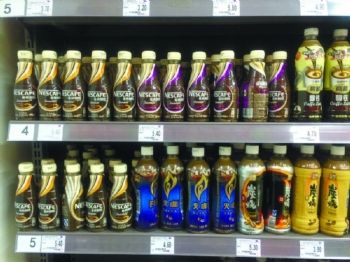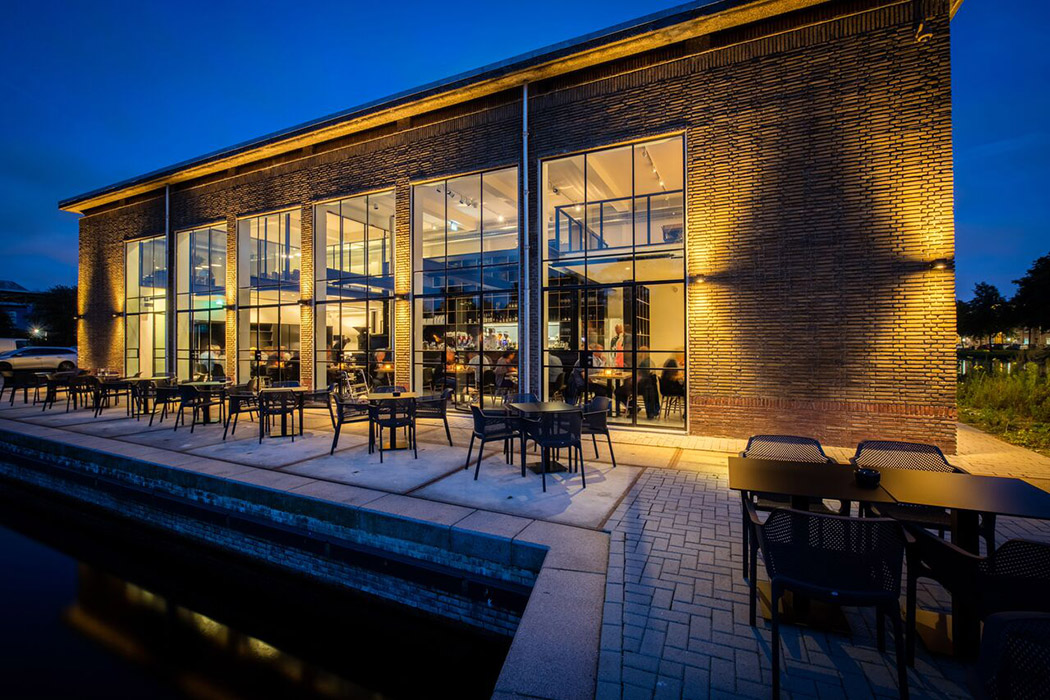Ready-to-drink Coffee Market: a New Blue Ocean being excavated

In the past two years, when the entire beverage industry bid farewell to the golden era of high growth, coffee consumption has shown a rapid growth trend, and China's coffee market is growing at an annual rate of 15% and 20%. Both the leisure coffee chain represented by Starbucks and the instant coffee represented by Nestl é have made rapid development.
At a time when the scale of China's coffee consumption market is about to break through 150 billion yuan, instant coffee, freshly ground coffee and instant coffee are subdivided categories of coffee, and their market structure seems to be undergoing subtle changes. Instant coffee, a category of coffee consumption with a compound growth rate of 34%, is becoming a hot spot of competition in the beverage market.
The growth rate of instant coffee slows down
From the perspective of the whole industry chain, in recent years, China's coffee industry has developed rapidly, and there have been qualitative breakthroughs in both planting area and total output. By the beginning of 2016, China had planted more than 1.8 million mu of coffee, with a total output of 140000 tons, accounting for 1.5 per cent of the world's total output. China is one of the 21 countries and regions that produce coffee in more than 70 countries and regions with an output of more than 100000 tons.
Although coffee cultivation in China has a history of more than one hundred years, the coffee industry has only been opened for more than 20 years. With the continuous progress of intensive processing technology in China, the proportion of deeply processed products such as roasted coffee and instant coffee in China has greatly increased, and the quantity, quality and variety of deeply processed products have been continuously enriched. middle and high-end products such as instant coffee powder, roasted coffee beans, coffee lozenges, coffee capsules, hanging ear coffee and Keli cup coffee have emerged, the industrial chain has been continuously extended, and the product structure is changing to diversification.
With the continuous release of the potential of China's coffee market and the overall comprehensive and rapid development of the coffee market, consumers' consumption habits are also quietly changing: the growth rate of instant coffee, which still accounts for about 70% of the Chinese market, is slowing down. According to a report by Mintel, the market share of instant coffee fell from 80.7% in 2009 to 71.8% in 2014, and will continue to decline. According to forecasts, the market share of instant coffee will fall to 66% by 2019.
Ready-to-drink coffee is emerging.
With the acceleration of the pace of life, the improvement of the quality of instant coffee products and the transfer of target consumer groups, as a minority area of the coffee market, the instant coffee market is heating up rapidly.

Before 2003, the domestic ready-to-drink coffee beverage market was in the stage of enlightenment and did not form a large sales volume. With the increasing diversification of the beverage market, subdivided categories emerge in endlessly, and coffee drinking has also made great progress. From 2003 to 2008, Uni-President Yaha made a strong debut, Nestl é, Kraft and other foreign enterprises continued to make efforts, the domestic ready-to-drink coffee market entered a stage of rapid growth, and the overall sales compound growth rate reached 15%. From 2009 to 2013, the compound growth rate of ready-to-drink coffee in China reached 34.2%, according to a survey conducted by Canardia in the UK. According to the China Industrial Research Network, the market for ready-to-drink coffee reached 3.948 billion yuan in 2014, an increase of 34.7% over the same period last year.
In terms of the market pattern, according to Euromonitor, Nestl é has a market share of 55.5%, followed by Suntory with 14.1%. Both Uni-President and Kirin have single-digit market shares.
Nestl é is the undisputed leader in the Chinese market, whether instant coffee or instant coffee, accounting for more than 50% of the market.
At the beginning of last year, Nestle Coffee Center was officially completed in Pu'er, Yunnan Province. Paul Bokai, CEO of Nestl é, said that China will become the largest market for Nestle coffee. In fact, as early as 1998, Nestl é began to purchase coffee beans for its products in Yunnan. Nestl é plans the entire coffee supply chain and value chain.
At the same time, Chinese consumers are pursuing more advanced, more tastes and more choices, and the competition in the coffee market is becoming increasingly fierce. Last year, Nestle Coffee launched a sugar-free 1: 2 coffee in China, which is a concern about Chinese consumers who like to drink coffee without sugar. At the same time, Nestle Coffee has made strategic adjustments, laying out the capsule coffee business and infiltrating into the high-end market as well as the second and third-tier markets. "Nestl é is the first coffee brand to enter the Chinese market, and not only in the ready-to-drink coffee sector, Nestl é is a leader in the field of instant coffee and capsule coffee, so the coffee market has a solid foundation and a stronger brand." Introduced by people in the industry.
It seems that Nestl é, an aging "enlightening teacher of Chinese coffee", will usher in new development opportunities.
The giant is ready to drink coffee.
Although the development of ready-to-drink coffee in China has given rise to huge profits, it has also brought fierce competition. Since the launch of Yaha Coffee in 2003, China's instant coffee market has shown a trend of rapid development.
The Joya instant coffee brand was first listed in Japan in 1975 and has become one of Coca-Cola's brands with annual sales of more than $1 billion. In 2014, Coca-Cola promoted Qiaoya in the mainland market in a high profile and got a good market response. Reviewing the market performance of the product, Coca-Cola said: "since it was listed in some Chinese cities at the end of 2014, Qiaoya has quickly become one of the mainstream products. And in the future, we will continue to pay attention to the expansion of channels, bring products to more potential provinces and regions, and comply with the taste preferences of Chinese consumers, and launch some unique flavors at the right time. "
In early 2016, Wa also launched Maoyuan Coffee. This ready-to-drink coffee is priced at 5.5 yuan and is mainly for the first-tier city market.
In terms of price, Qiaoya 268 ml bottled coffee is priced at 4.86 yuan, Nestl é 268 ml bottled coffee is priced at 5.4 yuan, Wa 245 grams of coffee is priced at 5 yuan, and unified 450 ml coffee costs 4.5 yuan. Basically, the product positioning of 5 yuan has also become an entry-level product for ready-to-drink coffee. The mainstream price of instant coffee revolves around the pricing range of about 5 yuan, and the competition pattern has come into being. It can be predicted that the competition in this market will be more fierce in the future. Therefore, the new coffee products priced in this range will have a small market space and fierce competition in the future, and the requirements for products will be higher.
In June 2016, Nestl é launched snow curry mousse, priced at 7 yuan. Nestl é is trying to compete with these competitors in terms of price, packaging design, drinking style and even taste. It can not stop at the middle end (about 5 yuan) of silky latte and silky mocha coffee. The slightly higher price of Snow Curmus aims at the needs of middle and high-end consumers, which is not only at a distance from the ready-to-drink coffee at the price of 5 yuan, but also lower than the price of Starbucks bottled coffee (16mur25 yuan), while enriching Nestl é's own ready-to-drink coffee product line.
Ready-to-drink coffee enters the era of high price
But it is clear that companies will not let go of the high-end market. In 2015, Uni-President launched Lando Coffee and Yaha "Hey" series with a price of 10mur20 yuan outside Yaha Coffee. The Yaha "Hey" series is defined as "clean and bright", aiming at the middle and high-end market of ready-to-drink coffee. Uni-President no longer focuses on the "entry-level" coffee with a positioning of 5 yuan, but further distinguishes the audience of the product.
Starbucks, as a global coffee brand, teamed up with Master Kang in early 2015 to launch a strong offensive against the ready-to-drink coffee market. With the addition of Starbucks, the performance of ready-to-drink coffee products has been upgraded, the most representative of which is Starbucks Frappuccino ready-to-drink coffee. The price positioning of about 22 yuan, selected raw materials and production technology make its price, taste, quality and other products open the gap with the existing products in the domestic market. An industry insider with in-depth knowledge of the coffee market said: "in fact, similar to bottled ready-to-drink coffee such as Nestl é, these low-threshold popular coffee may be closer to beverages, while Starbucks has launched products that are much higher in price, but still have a broad consumer market, mainly because of their freshly ground technology and differentiated taste."
At the end of 2016, Starbucks launched a bottle of ready-to-drink coffee, strawberry cheese and milk-flavored bottle cappuccino, at R.G.F, a cafe in Shanghai. Starbucks said that during the product development phase, new products were tested specifically for the taste preferences of Chinese consumers.
Although the industry is growing rapidly, instant coffee accounts for less than 2% of the beverage industry as a whole. China's beverage industry is facing a reshuffle, carbonated drinks, water, fruit juices and other major categories are also experiencing unprecedented challenges, its market is gradually becoming saturated. China's coffee sales were about 70 billion yuan in 2015. Judging from the 15% annual growth rate of the Chinese market, the Chinese coffee market will reach 300 billion yuan by 2020. In the coming period of time, drinking coffee will be a new blue ocean for enterprises to explore vigorously.
Important Notice :
前街咖啡 FrontStreet Coffee has moved to new addredd:
FrontStreet Coffee Address: 315,Donghua East Road,GuangZhou
Tel:020 38364473
- Prev

Coffee shop design appreciation: factory transformation of the Dutch Hague paint factory transformed into a coffee bar
Amsterdam architecture studio Bureau Fraai has transformed a pre-paint factory in the Hague into a unique coffee bar, restaurant and business center. The whole space is mainly made of steel, including the Capriole logo, and the entrance rolls of toilets and wardrobes are also made entirely of steel. In addition, in sharp contrast to the black and white interior, the designer's design of all tables and cabinets
- Next

Dig deep into the top secret business that Starbucks and COSTA won't tell you.
To take Starbucks and COSTA as an example, in addition to scene marketing, there are also some unknown marketing secrets, coffee shops that are good at insight into human weaknesses, how they make money from customers. First, the powerful membership card in the world to do the best coffee shop actually two: a Starbucks, a COSTA. They are like KFC and McDonald's, generally not
Related
- What documents do you need to go through to open a coffee shop? coffee shop coffee shop certificate processing process
- How to purchase Coffee beans in small Cafe how to choose a suitable supplier for domestic Coffee supply Company
- How to drink Starbucks Fragrance White Coffee? how to make Australian White Coffee? what Italian coffee beans are recommended?
- The Story of Flora Coffee: the name of Flora Coffee Bean and the implication of the Flowers on Florna Coffee
- How much does a cup of coffee cost? How much is the profit of a cup of coffee? What is the profit of the coffee shop in a year?
- Yunnan small Coffee, known as "fragrant Coffee", introduces the characteristics of Alpine Arabica Coffee producing areas in Yunnan, China
- 2023 latest Starbucks full menu price list how much is a cup of Starbucks coffee what is better to drink the most popular hot and cold drinks recommended
- Starbucks different kinds of Coffee Price list Starbucks menu 2023 Top Ten Best drinks in Starbucks
- Starbucks Spring praise Comprehensive matching Coffee Bean theme Story Packaging implication and taste description
- The cost of a cup of coffee latte American coffee cost price and selling price

